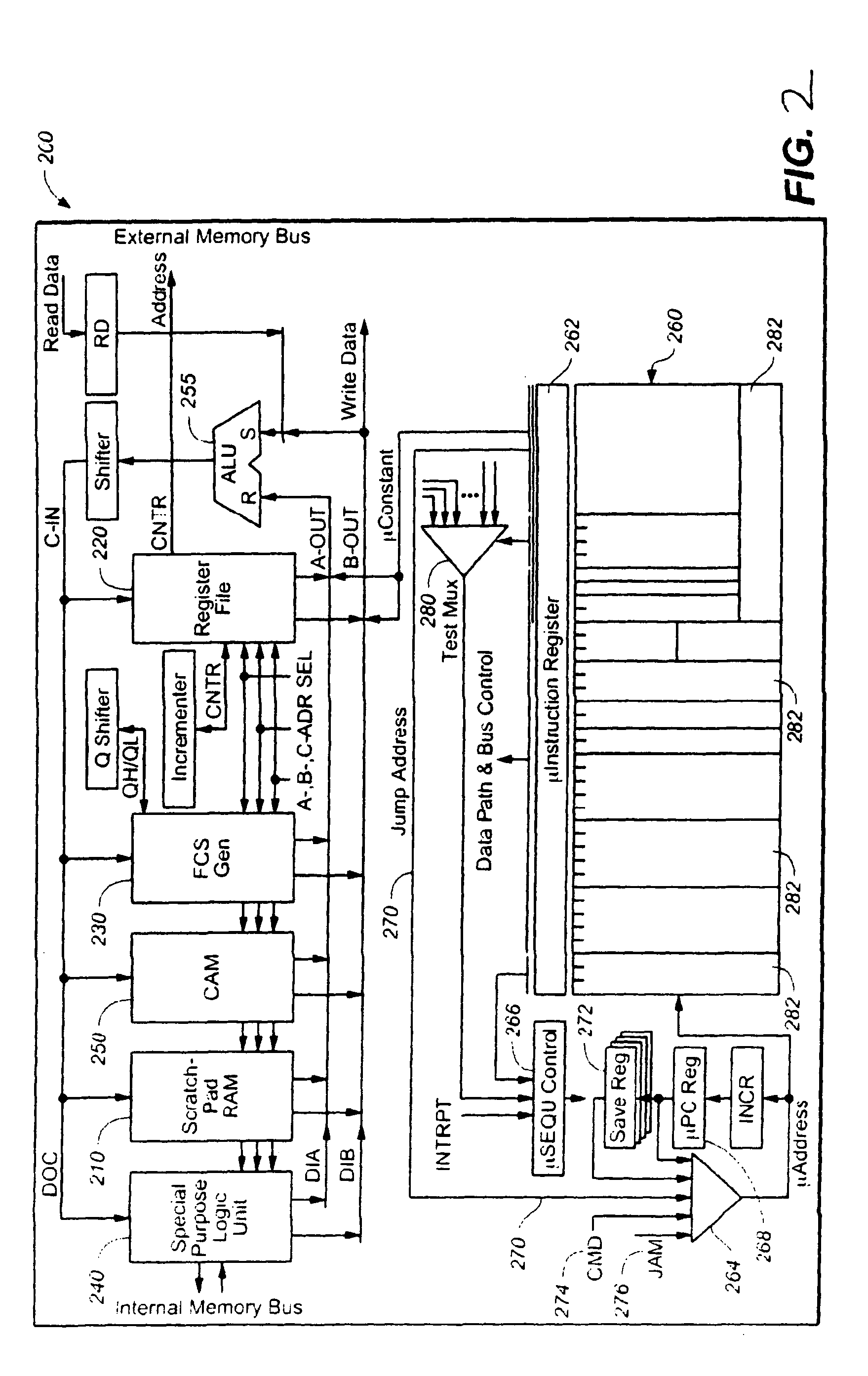System and method for large microcoded programs
a micro-coded program and program technology, applied in the field of microprocessors, can solve the problems of power consumption, complexity and scope of existing microarchitectures, and the size of the micro-coded program may be quite large, so as to minimize the accumulation of data latency, reduce power consumption, and save a substantial amount of battery power
- Summary
- Abstract
- Description
- Claims
- Application Information
AI Technical Summary
Benefits of technology
Problems solved by technology
Method used
Image
Examples
Embodiment Construction
[0033]The present invention involves routing, in a mesh network topology, in a SDR network. A plurality of nodes each act as a transmitter and receiver, in a packet switching network forming a MANeT, with the nodes following a communications protocol such as the OSI (ISO) or IEEE model, preferably the IEEE 802.11 or equivalent. The nodes each have a network processor, as described further herein, preferably an ASIC device formed form a set of programmable building blocks comprising cores. The cores comprise at least one Network Processor core, as further taught herein. The cores are fast, scalable and consume low power.
[0034]The network typically employs hop-by-hop (HBH) processing to provide end-to-end reliability with fewer end-to-end transmissions, and can engage in intermediate node routing. A hop is a transmission path between two nodes. Network coding (described herein) further reduces end-to-end transmissions for multicast and multi-hop traffic. Each of the nodes has a plural...
PUM
 Login to View More
Login to View More Abstract
Description
Claims
Application Information
 Login to View More
Login to View More - R&D
- Intellectual Property
- Life Sciences
- Materials
- Tech Scout
- Unparalleled Data Quality
- Higher Quality Content
- 60% Fewer Hallucinations
Browse by: Latest US Patents, China's latest patents, Technical Efficacy Thesaurus, Application Domain, Technology Topic, Popular Technical Reports.
© 2025 PatSnap. All rights reserved.Legal|Privacy policy|Modern Slavery Act Transparency Statement|Sitemap|About US| Contact US: help@patsnap.com



